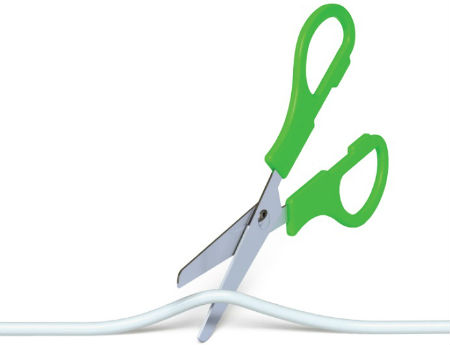Cord-Cutting ‘Slows To A Crawl’: Analyst

Following a relatively smooth second quarter, typically the weakest for the pay-TV industry as students depart and other consumers move to their summer homes, the budding cord-cutting trend has slowed to a crawl, MoffettNathanson principal and senior media analystCraig Moffett declared in a research note issued Thursday.
“Cord cutting trends in Q2 remained surprisingly benign,” he wrote, noting that the number of pay-TV subscriptions have hardly budged.
“That may not sound like a reason for celebration, but it is a small but discernible improvement from recent trends when the number of pay TV subscribers was actually shrinking (albeit only slowly),” Moffett wrote.
According to MoffettNathanson’s estimate, the collective U.S. pay-TV sector lost a net 305,000 subs in the second quarter, versus 387,000 a year ago.
Broken down further, U.S. cable lost 517,000 pay-TV subs in the second quarter, trimmed from the 598,000 it lost in the year-ago quarter. Cable’s loss rate of 2.7% was the industry’s best showing in six quarters, Moffett pointed out.
DirecTV and Dish Network, meanwhile, lost 78,000 subs in the second quarter of 2014, narrowed significantly from the 162,000 they lost in the year-ago period.
U.S. telcos added 290,000 pay-TV subs in Q2 2014, down from 373,000 net adds a year earlier.
Multichannel Newsletter
The smarter way to stay on top of the multichannel video marketplace. Sign up below.
When factoring in new household formation, which remains dismal, cord-cutting has closed to an annualized rate of about 400,000 homes, well below the peak, yet still-modest, rates of cord-cutting seen in 2012, Moffett said, pointing out that pay-TV ARPU is growing at a rate of 3.7%.
“Certainly, to paraphrase Mark Twain, reports of the demise of Pay TV have bene greatly exaggerated,” Moffett summarized.
But he added that there’s still reason to be nervous as the “affordability stresses continue to build, and the obstacles to cord cutting (particularly content availability, but also technology that for so long were the reason we were less worried than consensus, continue to fall away.”
